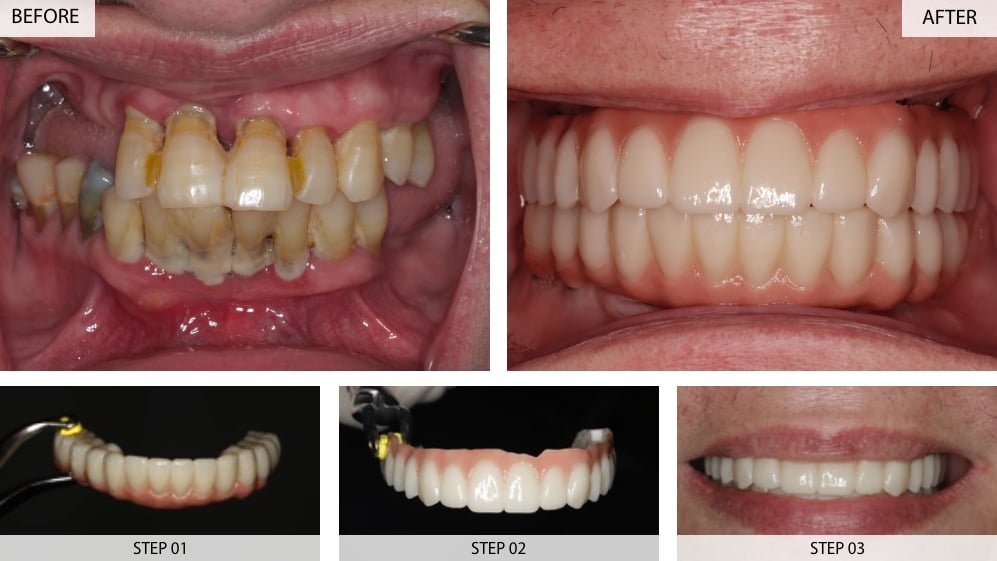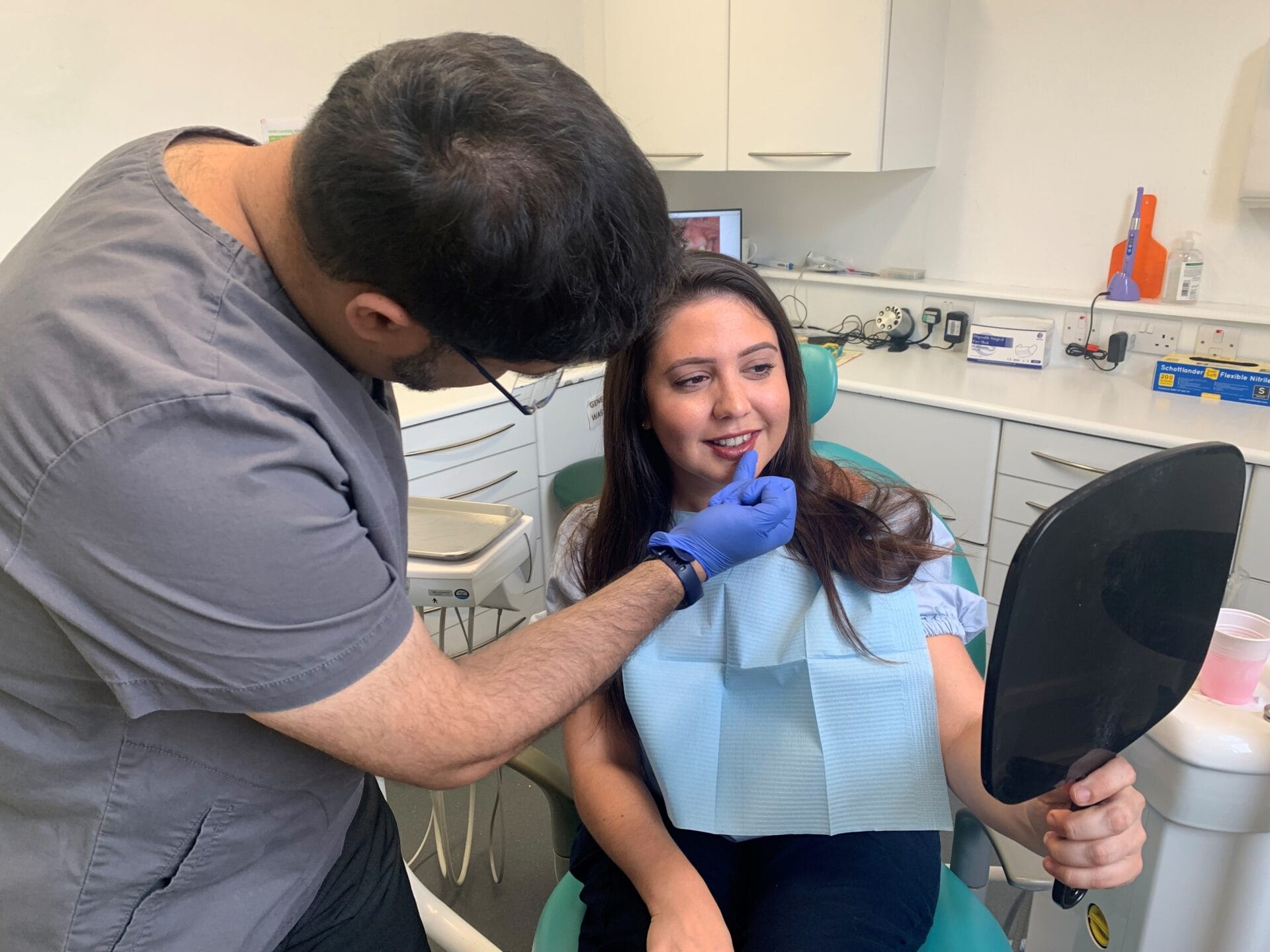Your Guide to Dental Implants Kent: Reclaim Your Dental Health
Your Guide to Dental Implants Kent: Reclaim Your Dental Health
Blog Article
Experience the Most Current Innovations in Dental Implants Innovation
As the area of dental care continues to develop, the innovations in oral implant modern technology have been nothing except amazing. From the usage of advanced products that boost sturdiness to the application of electronic imaging for precise placement, these technologies are changing the landscape of dental care. With minimally intrusive surgical methods and the modification capabilities of 3D printing, patients now have access to tailored services that were when inconceivable. Additionally, the integration of technology is transforming the functionality of oral implants, guaranteeing enhanced outcomes and patient satisfaction.
Advanced Products for Enhanced Resilience
In the realm of oral implants innovation, the integration of innovative products has significantly contributed to enhancing resilience and longevity of these critical oral prosthetics. The utilization of products such as titanium alloys, zirconia, and ceramic compounds has actually changed the field by providing increased resistance, toughness, and biocompatibility to rust.
Titanium alloys are widely used in oral implants due to their outstanding strength-to-weight ratio, deterioration resistance, and compatibility with the human body. These alloys make sure the security and longevity of the implant by withstanding the pressures applied throughout talking and eating, supplying a reliable service for clients looking for sturdy tooth substitutes.
Zirconia, a sort of ceramic material, has gained popularity for its biocompatibility and natural tooth-like appearance. Its high strength and resistance to wear make it an appropriate option for dental crowns and bridges, improving the total aesthetics and functionality of the implant.

Digital Imaging for Specific Positioning
The evolution of dental implants innovation has actually additionally progressed with the assimilation of electronic imaging techniques, making sure precise placement of these prosthetics for ideal useful and visual results. Digital imaging plays a critical duty in the preparation and placement of dental implants by giving thorough 3D photos of the individual's jawbone structure. This innovation allows dentists to analyze bone thickness, locate vital frameworks, and prepare the exact placement and angle for implant placement with unmatched precision.
By utilizing electronic imaging, dental practitioners can create digital surgical guides that offer as a roadmap throughout the implant positioning procedure. These guides are tailored for every individual, taking into account their unique makeup and the wanted end result. This level of precision not just improves the success rate of dental implant treatments yet also minimizes the risk of complications.
Furthermore, digital imaging makes it possible for dentists to imagine the last prosthetic restoration before the actual placement of implants, enabling for precise preparation and ensuring that the result satisfies the patient's visual assumptions. In general, the integration of digital imaging technology has revolutionized the field of dental implants, offering individuals an extra foreseeable, efficient, and patient-specific therapy technique.

Minimally Intrusive Surgical Methods


Advancements in medical methods have resulted in the development of minimally invasive strategies in the area of dental implantology. These strategies aim to minimize trauma to the person, shorten recovery times, and boost general therapy results. Minimally invasive surgeries involve smaller cuts, specialized tools, and advanced imaging innovations to precisely place oral implants with see here very little disruption to bordering tissues.
One secret element of minimally intrusive methods is using guided surgical treatment, where 3D imaging and computer-aided style software program are utilized to plan the dental implant placement with fantastic accuracy. This enables for an extra foreseeable outcome and can often remove the demand for considerable flap surgical treatment.
Moreover, advancements in products and implant layout have actually also added to the success of minimally invasive approaches. Implants with boosted surface residential properties advertise quicker osseointegration, decreasing the recovery time required before the prosthetic reconstruction can be positioned.
3D Printing for Custom-made Solutions
Using 3D printing modern technology in dental implantology permits the creation of highly customized options tailored to specific person requirements and physiological variants. This cutting-edge modern technology allows oral experts to create and fabricate dental implants with remarkable precision and precision. By making use of electronic imaging techniques, such as cone light beam calculated tomography (CBCT), thorough 3D designs of the individual's mouth can be produced to lead the dental implant planning process.
Among the vital advantages of 3D printing in dental implantology is the capability to develop patient-specific implants that perfectly fit the one-of-a-kind anatomy of each individual. This personalized strategy aids enhance the overall success and longevity of the implant by guaranteeing optimum fit and positioning. Furthermore, 3D printing permits for the manufacturing of complex geometries and complex structures that would certainly be tough or difficult to achieve making use of standard manufacturing methods.
Additionally, 3D printing innovation enables dental practitioners to enhance the implantation procedure, decreasing surgical procedure time and enhancing overall client experience. With its capability to develop customized solutions rapidly and efficiently, 3D printing is transforming the field of dental implantology, offering individuals innovative treatment choices and enhanced results.
Integrated Technology for Improved Capability
Applying cutting-edge modern technology in oral continue reading this implantology improves functionality and accuracy, elevating the criterion of take care of people undergoing dental implant treatments. Integrated innovation plays an essential role in improving the overall success and resilience of dental implants. One vital improvement is the integration of digital scanning and imaging modern technologies, such as cone-beam computed tomography (CBCT) and intraoral scanners. These tools allow for thorough 3D imaging of the individual's dental frameworks, facilitating accurate treatment planning and implant placement.
Furthermore, the assimilation of computer-aided design and computer-aided production (CAD/CAM) innovation enables the development of customized dental implant repairs with outstanding precision. CAD/CAM systems utilize digital impressions to design prosthetics that completely fit the client's special composition, making certain optimum convenience and capability. In addition, the usage of robotic-assisted surgical procedure in dental implant positioning boosts accuracy and lessens the threat of human error.
Final Thought
To conclude, the most recent developments in oral implants innovation deal boosted sturdiness via advanced materials, exact positioning with electronic imaging, minimally invasive medical strategies, customized services with 3D printing, and improved functionality with integrated innovation - Dental implants Kent. These innovations in dental implants technology are revolutionizing the area and supplying patients with more reliable and effective therapy choices for restoring their smiles and oral health and wellness
The integration of modern technology is transforming the capability of dental implants, promising boosted results and client contentment.
The evolution of oral implants technology has better advanced with the assimilation of digital imaging techniques, ensuring accurate placement of these prosthetics for ideal practical and aesthetic end results. Minimally invasive surgical treatments involve smaller cuts, specialized tools, and advanced imaging innovations to specifically place oral implants with marginal disruption to bordering cells.
Executing innovative technology in dental implantology improves capability and precision, raising the criterion of treatment for patients going through dental implant treatments. Dental implants Kent. Integrated technology plays an essential function in article source boosting the overall success and longevity of dental implants
Report this page